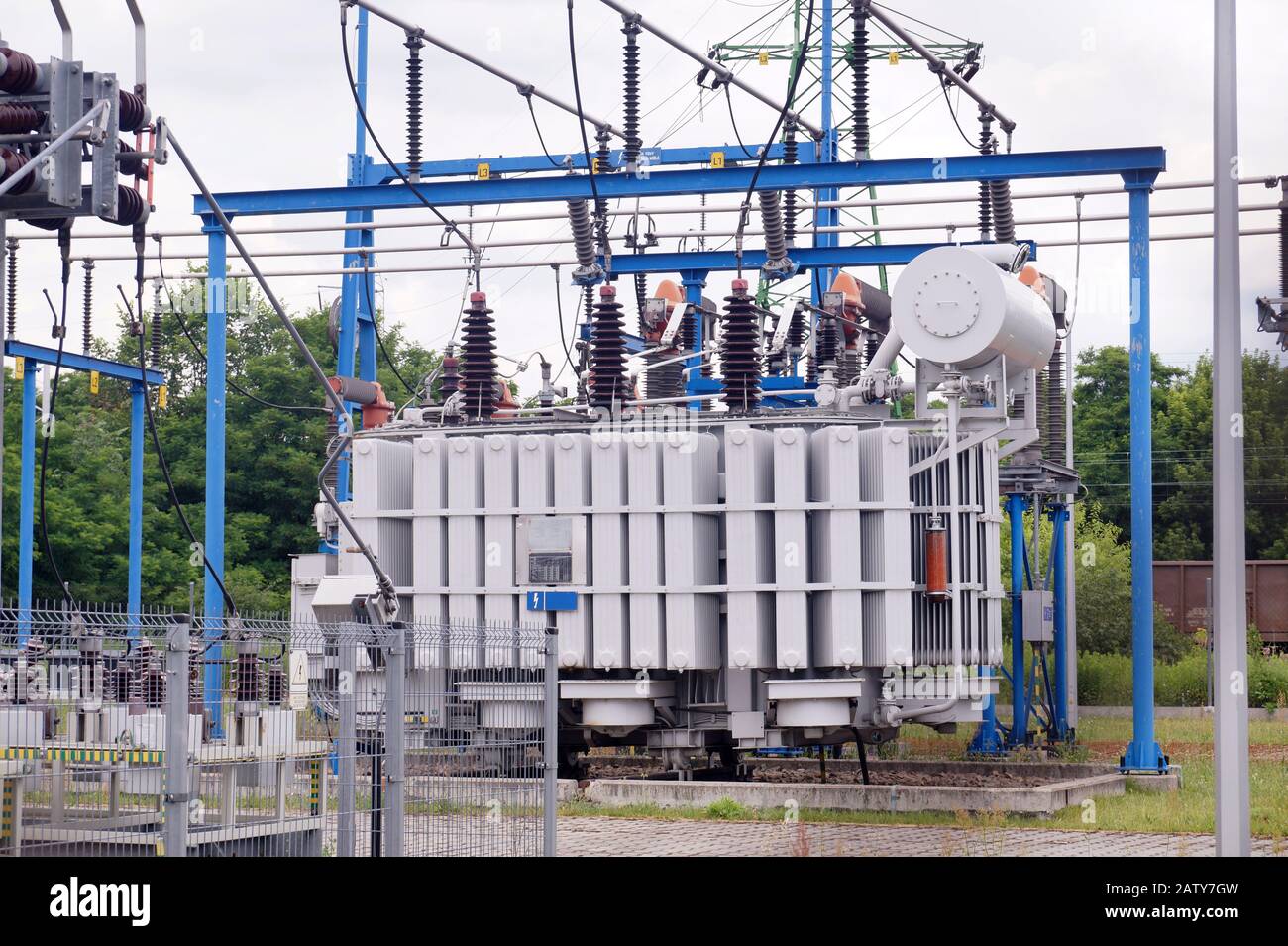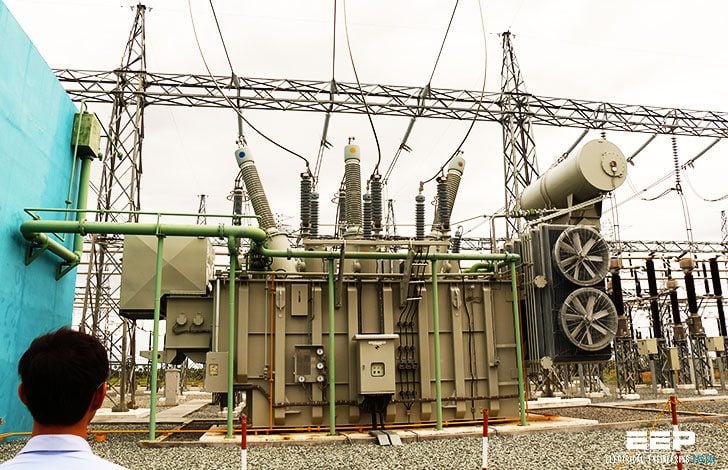The voltage level of a substation is the measure of the electrical potential difference between two conductors. The conductor with the higher voltage is said to be at a higher potential than the conductor with the lower voltage.
A substation is a place where electricity is generated, transmitted, and distributed to consumers. The voltage level of a substation is the amount of electrical pressure that exists within the substation. This pressure is created by the interaction of the magnetic fields of the generators and transformers within the substation.
The higher the voltage level, the greater the electrical pressure.
How Do Substations Work?
What is a Substation
A substation is an electrical facility that serves as a connection point between two or more transmission lines. A substation contains high-voltage equipment that transforms the voltage of the electricity so it can be sent to homes and businesses through lower-voltage distribution lines.
Substations are usually located near population centers because that is where the demand for electricity is highest.
The electricity produced at power plants first travels to regional substations, then to local substations before finally reaching customers.
The size of a substation varies depending on the amount of power it needs to handle. For example, a small suburban substation might have just a few pieces of low-voltage equipment, while a large urban substation serving millions of people could have acres of land and multiple high-voltage transformers.
No matter their size, all substations share certain features, such as switchgear (which controls the flow of electricity), metering equipment (which monitors usage), and circuit breakers (which prevent overloaded circuits).
Electrical Substation Components Pdf
An electrical substation is a crucial link in the power system. It transforms voltage from high to low, or the reverse, and also serves as a switchyard for connecting transmission lines. A typical substation consists of a number of components, including transformers, circuit breakers, busbars, and protection devices.
Transformers are used to change the voltage level of electricity passing through the substation. The primary winding receives electricity at high voltage from the transmission line, while the secondary winding delivers it at a lower voltage to distribution lines. In order to prevent short circuits and damage to equipment, circuit breakers are used to disconnect parts of the substation when necessary.
Busbars are made of copper or aluminum and carry electricity between different parts of the substation. They are typically arranged in a horizontal or vertical configuration. Protection devices are installed in order to safeguard against faults such as overvoltages and undercurrents.
These can include fuses, relays, and circuit breakers.
Types of Substation Pdf
A substation is a critical part of the electrical grid. It is a point where electricity is transformed from one voltage to another, or where it is converted from alternating current (AC) to direct current (DC). Substations also help regulate the flow of electricity across the grid.
There are three main types of substations: transmission, distribution, and generation. Transmission substations step up the voltage of electricity so that it can be transported long distances through high-voltage power lines. Distribution substations then step down the voltage for local distribution to homes and businesses.
Generation substations connect power plants to the grid.
Within each of these types of substations, there are often different configurations that serve specific purposes. For example, some transmission substations may use transformers to change voltages while others use circuit breakers to protect equipment from damage due to sudden surges in electrical flow.
Similarly, some distribution substations may use static var compensators (SVCs) to stabilize voltage while others use on-load tap changers (OLTCs) to adjust voltages as needed.
No matter their configuration, all substations play a vital role in keeping the lights on and our society running smoothly.
Distribution Substation
A distribution substation is a power substation that transforms medium voltage electrical power to low voltage, which then will be distributed to end users via the distribution network.
The first thing that a distribution substation does is take in high voltage from either the transmission grid or another generating plant. This high voltage electricity is then transformed into lower voltages.
The most common voltages used in distribution are 240 volts and 120 volts. The equipment within the substation that handles this transformation is called a transformer.
Once the electricity has been transformed into lower voltages, it needs to be routed to where it will be used.
To do this, the distribution substation uses circuit breakers and switches to direct the flow of electricity through various paths. These paths are typically made of metal conductor wires called busbars.
The final step in a distribution substation is sending the electricity out to the end user via service drops.
Service drops are simply insulated wires that connect homes and businesses directly to the Distribution Substation’s busbars.
Substation Voltage
A substation is a type of electrical system that is used to change the voltage of an electric current. This is done by using a transformer to change the voltage of the current. The substation will also have other equipment that is used to control the flow of electricity and protect the equipment from damage.
Step-Down Substation
In the power industry, a step-down substation is a type of substation that reduces the voltage of an electrical grid. The incoming high voltage from the grid is reduced to a lower voltage that can be used by consumers. This reduction in voltage is accomplished by using transformers.
A step-down substation is typically located near where the power will be consumed, such as a neighborhood or industrial area. This proximity minimizes power loss during transmission. Step-down substations are also known as primary substations.
Transmission Substation
A transmission substation is a critical part of the electric power system. Its purpose is to take the high-voltage electricity from the transmission lines and step it down to a lower voltage that can be used by customers. The substation also switches electricity between different parts of the grid.
Transmission substations are usually located near population centers because that’s where the demand for electricity is highest. The substation has equipment that transforms the electricity from high voltage to low voltage, as well as devices called circuit breakers that protect equipment from damage due to faults or overloads.
The first step in delivering electricity to customers is known as bulk power generation.
This is done at large central stations, often using fossil fuels such as coal, natural gas, or nuclear energy. The resulting high-voltage direct current (HVDC) or alternating current (HVAC) is then transmitted through long distance HVAC or HVDC transmission lines to a transmission substation.
At the substation, transformers change the voltage so it can be sent on secondary distribution lines running through neighborhoods and business districts at a safe level for customer use (usually 12kv).
These secondary distribution lines connect directly to customer buildings via service drop wires.
Transformer Substation
A transformer substation is a type of electrical substation that transforms voltage from high to low, or the reverse, using transformers. This type of substation is used when the voltage needs to be reduced for distribution purposes, or when it needs to be increased for transmission purposes. Transformer substations can also be used to change the phase of the voltage.

Credit: www.alamy.com
Are Substations High Voltage?
Yes, substations are high voltage. The voltages used in substations can be as high as 345,000 volts. This high voltage is necessary to efficiently transmit electricity over long distances.
What is a Substation Used for Voltage Level Change Known As?
A substation is used for voltage level change known as a transformer. A transformer is an electrical device that transfers energy between two or more circuits through electromagnetic induction. Transformers are used to change the voltage of an alternating current (AC) in electric power applications, and can also be used to convert alternating current to direct current (DC).
What is the Voltage Range of High Voltage Substation?
In a high voltage substation, the voltage range is between 115 kV and 765 kV. This range is necessary to provide the power needed for large industrial loads and for long-distance transmission lines.
Are Substations Ac Or Dc?
Substations are power stations where electricity is transformed from high voltage to low voltage, or vice versa. The type of current in a substation depends on the type of equipment being used. For example, if a substation is using transformers to change the voltage, then it will be using AC (alternating current).
If the substation is using rectifiers to change the voltage, then it will be using DC (direct current).
Conclusion
A substation is a critical part of the electric power grid, and the voltage level of a substation can have a major impact on the stability of the grid. There are three main types of voltage levels in a substation: high, medium, and low. High-voltage substations are typically used to connect different parts of the grid, or to connect the grid to large generators.
Medium-voltage substations are typically used to connect smaller generators to the grid, or to distribute power within a small area. Low-voltage substations are typically used to distribute power within buildings or other structures.



